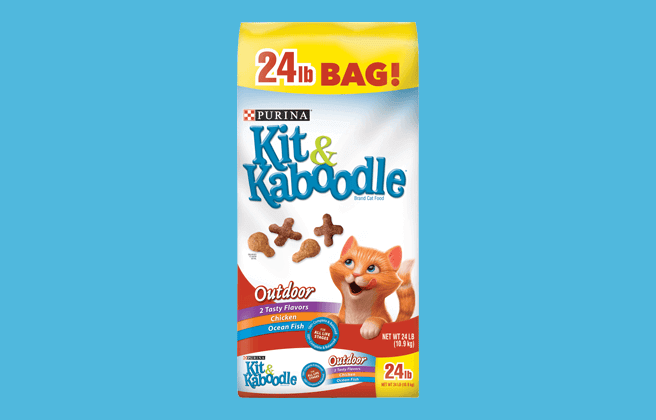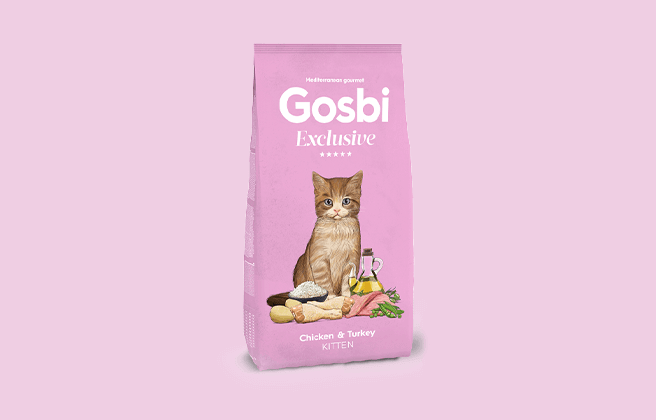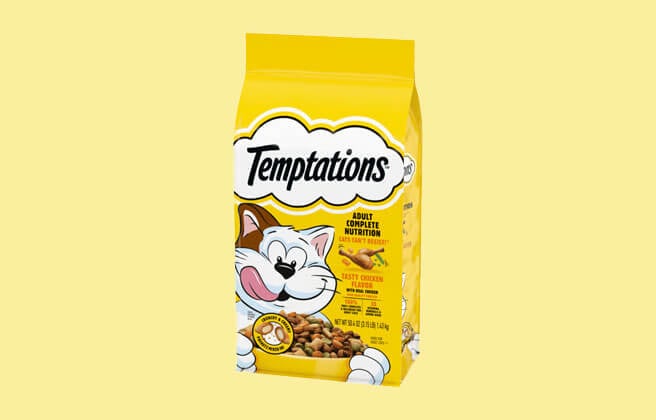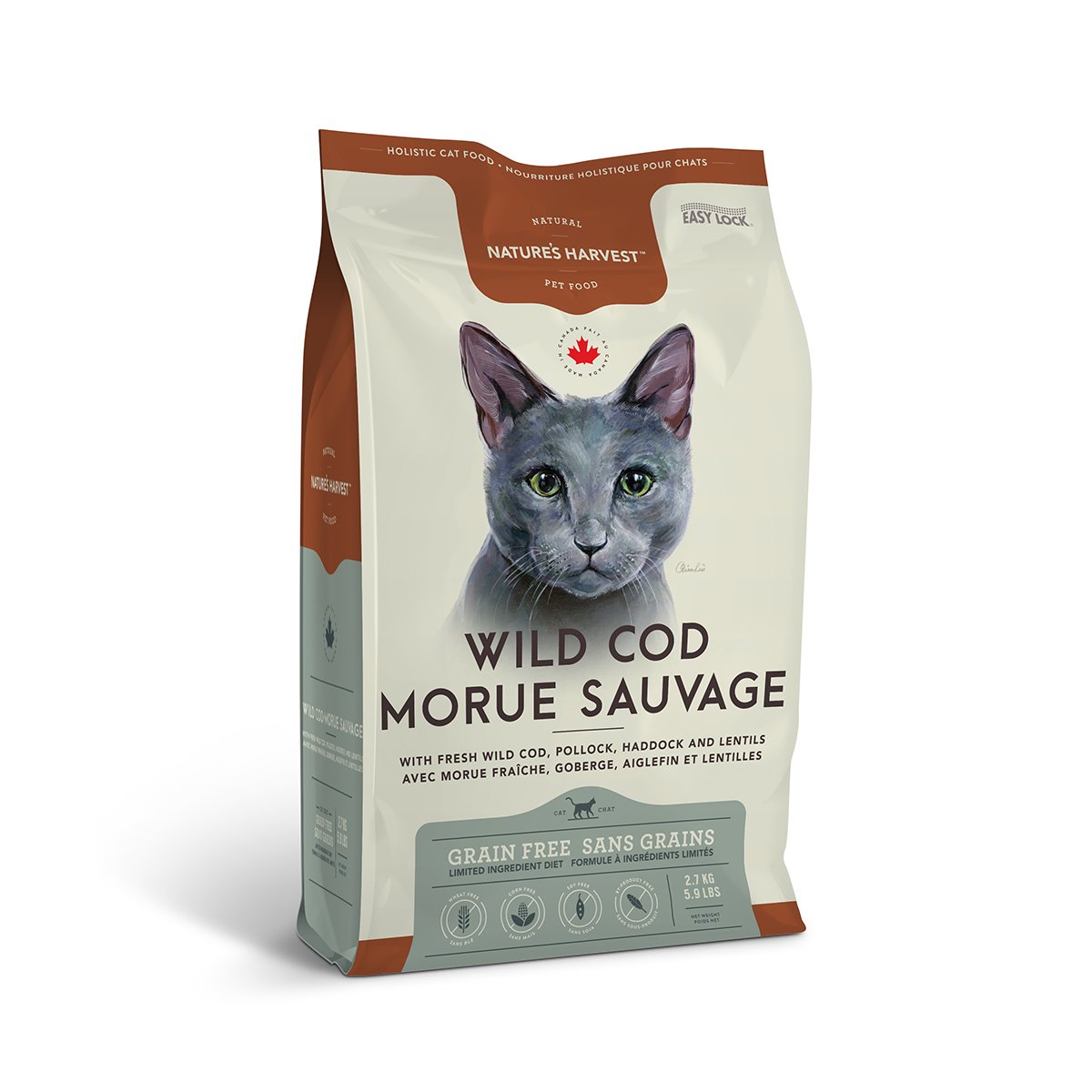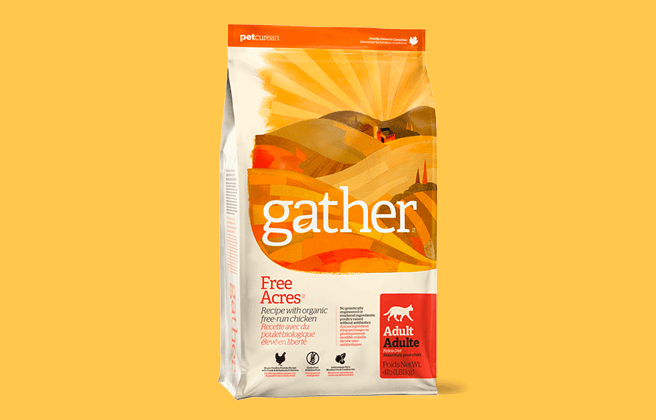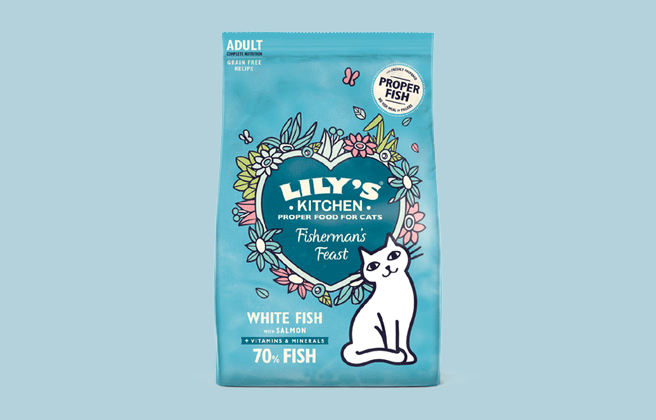
Our Verdict
Lily’s Kitchen Dry product range is made of four recipes which all receive the Cat Food Advisor rating, 3 stars
This range of food lists animal protein as the first ingredient. However, protein levels are lower than average and plant based protein is used in some recipes. Carbohydrates are also higher than average.
Pros
- Contains animal based protein
Cons
- Low in protein
- High in carbohydrate
- Contains plant based protein
The table below shows each recipe in the range including our rating and the AAFCO nutrient profile: Growth (kitten), Maintenance (adult), All Life Stages, Supplemental or Unspecified.
| Product line | Rating | AAFCO |
|---|---|---|
| Lily’s Kitchen Chicken Casserole Dry Food | 3 | M |
| Lily’s Kitchen White Fish & Salmon Dry Food | 3 | M |
| Lily’s Kitchen Chicken & White Fish Kitten Dry Food | 3 | G |
| Lily’s Kitchen Fish & Turkey Senior Dry Food | 3 | M |
Recipe and Label Analysis
Lily’s Kitchen White Fish & Salmon Dry Food was selected to represent the other products in the line for a detailed recipe and nutrient analysis.
Label and nutrient data below are calculated using dry matter basis.
Lily’s Kitchen White Fish & Salmon Dry Food
Estimated Dry Matter Nutrient Content
Protein
Fat
CarbsCarbohydrates
Seasonal white fish, salmon, potatoes, potato protein, egg, chicken gravy, cellulose, minerals, fish stock, flaxseed, prebiotic fructooligosaccharides, Italian cheese, seaweed, carrots, cranberries, bilberries, parsley, fenugreek seeds, zinc (as zinc chelate of amino acids hydrate), manganese (as manganese chelate of amino acids hydrate), copper (as copper (II) chelate of amino acids hydrate), selenium (as organic selenium s. cerevisiae CNCM 1-3060), iodine (as calcium iodate anhydrous), vitamin A (as retinyl acetate) 16,000 IU, vitamin D3 (as cholecalciferol) 1,200 IU, vitamin E (as alpha tocopherol acetate) 250 IU, taurine, L-Carnitine.
Fiber (estimated dry matter content) = 2.5%
Red denotes any controversial items
Ingredients Analysis
The first ingredient is seasonal white fish, a marine or freshwater species native to Canada and the California coast.
The second ingredient is salmon. Salmon is an oily marine and freshwater fish not only high in protein but also omega 3 fatty acids, essential oils needed by every cat to sustain life.
The third ingredient is potatoes. Potatoes can be considered a gluten-free source of digestible carbohydrates. Yet with the exception of perhaps their caloric content, potatoes are of only modest nutritional value to a cat.
The fourth ingredient is potato protein, the dry residue remaining after removing the starchy part of a potato.
Even though it contains over 80% protein, this ingredient would be expected to have a lower biological value than meat.
Less costly plant-based products like this can notably boost the total protein reported on the label — a factor that must be considered when judging the actual meat content of this cat food.
The fifth ingredient is egg. Eggs are easy to digest and have an exceptionally high biological value.
The sixth ingredient is chicken gravy, which can include a mixture of other components. In general, gravies tend to provide minimal nutritive value.
The seventh ingredient is cellulose, a non-digestible plant fiber usually made from the by-products of vegetable or wood processing. Powdered cellulose provides no nutritional value to a cat, although the fiber it provides does convey health benefits. Some powdered cellulose products work to reduce the occurrence of hairballs in cats.
The eighth ingredient is minerals. Minerals are included in this ingredients list, as in Europe ingredients are declared a little differently. Here in the US, our nutritional additives are listed within our ingredients. In Europe, ingredients and additives are listed separately. For that reason the category of minerals can be included, to include those elements which are classed as an ingredient, rather than an additive, such as calcium carbonate and magnesium oxide. These elements contribute to the nutritional balance of a food, so we see their inclusion in this product as a positive.
From here the list goes on to include a number of other items. But to be realistic, ingredients located this far down the list (other than nutritional supplements) are not likely to affect the overall rating of the product.
This food contains chelated minerals, minerals that have been chemically attached to protein. This makes them easier to absorb. Chelated minerals are usually found in better cat foods.
It also includes taurine, an essential amino acid for cats associated with the healthy function of heart muscle and eye sight, and is crucial for maintaining good health in cats. We view the presence of taurine as a positive addition.
Nutrient Analysis
Based on its ingredients alone, Lily’s Kitchen White Fish & Salmon Dry Food looks like an average dry product.
The dashboard displays a dry matter protein reading of 30%, a fat level of 17.8% and an estimated carbohydrate level of 44.2%.
As a group, the brand features an average protein content of 32.2% and a mean fat level of 18.9%. Together these figures suggest a carbohydrate content of 40.9% for the overall product line, alongside a fat to protein ratio of 59%.
This means that Lily’s Kitchen dry food range contains below-average protein, above-average carbohydrate and above-average fat, when compared to typical dry cat food.
Final Word
Lily’s Kitchen dry range food offers only fresh meat and fish sources. However, protein levels are low and some of these recipes include plant based protein.
Has Lily's Kitchen cat food been recalled in the past?
Yes. Lily’s Kitchen cat food voluntarily recalled a number of products in 2023 due to concern they may contain pieces of plastic. The product affected were:
-
Lily’s Kitchen Fishy Fish Pie 400g can
-
Dog Multipack 24 x 400g cans)
-
Can Batch Number: 1028F
-
Can Best Before Date: 01.09.2024
-
Lily’s Kitchen Chicken and Turkey Casserole 400g can
-
Multipack 24 x 400g cans)
-
Can Batch Number: 1032F
-
Can Best Before Date: 01.09.2024
You can view a complete list of all cat food recalls since 2021 here.
To stay on top of any cat food product recalls, sign up for our free email alerts, here.
About
Lily’s Kitchen is a UK pet food brand purchased by Nestle-Purina PetCare in 2020. It continues to operate as a stand-alone business and its products are available to order online across the world.
Nestle-Purina has similar arrangements with several super-premium niche pet food companies in the United States such as Merrick and Castor & Pollux.
Sources
Best cat foods
We uphold the highest editorial standards when creating the authoritative content pet parents rely on and trust.
Every piece of clinical content on the Cat Food Advisor is reviewed by our certified Veterinary Advisory Board, which consists of licensed veterinarians and medically certified specialists.
Our reviews are completely independent; we are not paid by any pet food company to promote their products favorably. We do not accept money, gifts, samples or other incentives in exchange for special consideration. For more information see our Disclaimer & Disclosure page.






